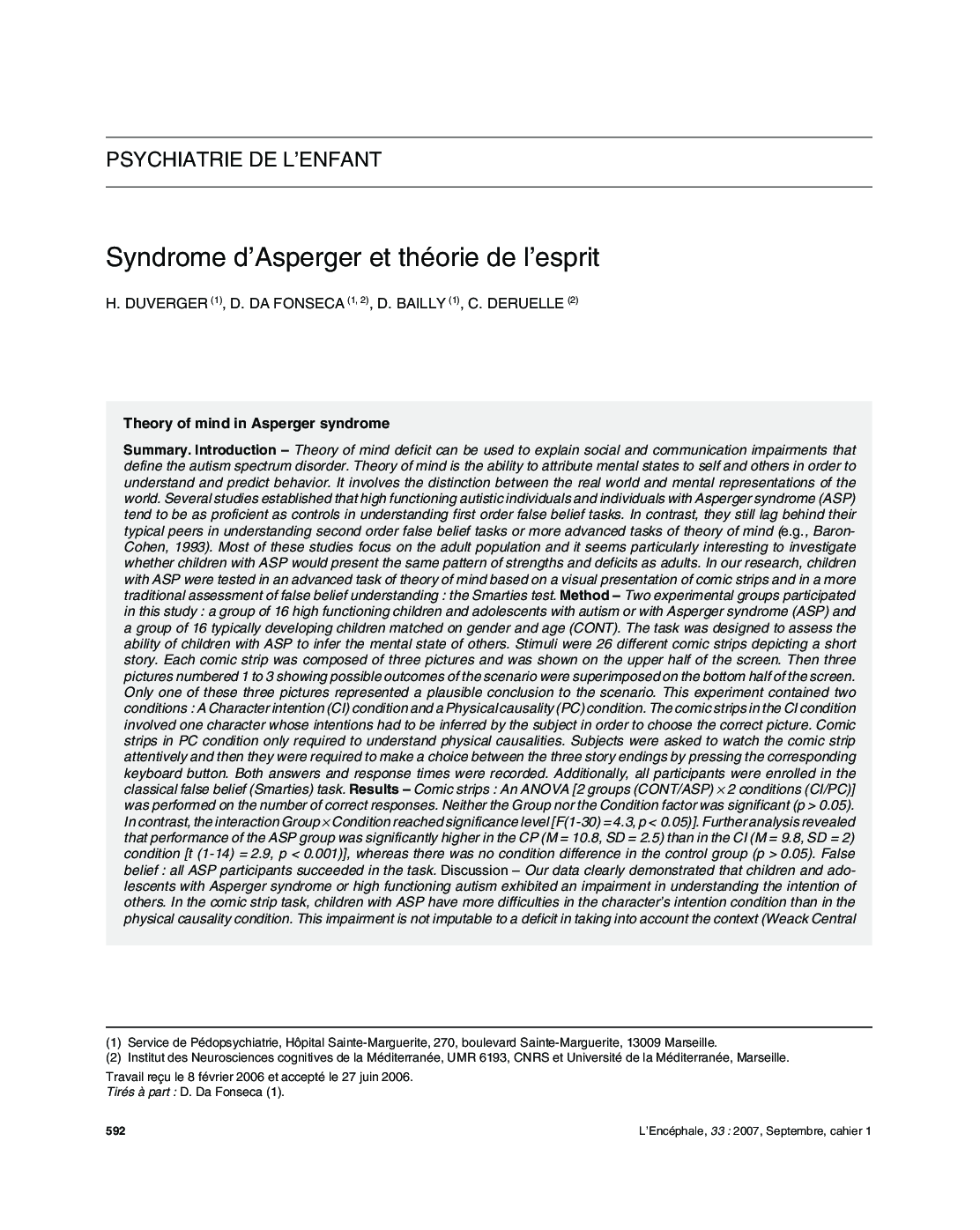| Article ID | Journal | Published Year | Pages | File Type |
|---|---|---|---|---|
| 4183168 | L'Encéphale | 2007 | 6 Pages |
Abstract
Our data clearly demonstrated that children and adolescents with Asperger syndrome or high functioning autism exhibited an impairment in understanding the intention of others. In the comic strip task, children with ASP have more difficulties in the character's intention condition than in the physical causality condition. This impairment is not imputable to a deficit in taking into account the context (Weack Central Coherence theory) since they performed as well as controls in the physical causality condition which also required the processing of the whole scene. In contrast, all children with ASP succeeded at the false belief task. These contradictory findings suggest that, although testing theory of mind, the two tasks do not tap similar mechanisms. It is possible that the use of verbal material in the false belief task improved performance of the ASP children who are known to present particular strengths in this domain. Another possible explanation that needs further testing would be that the level of complexity differs between the two tasks.
Keywords
Related Topics
Health Sciences
Medicine and Dentistry
Psychiatry and Mental Health
Authors
H. Duverger, D. Da Fonseca, D. Bailly, C. Deruelle,
